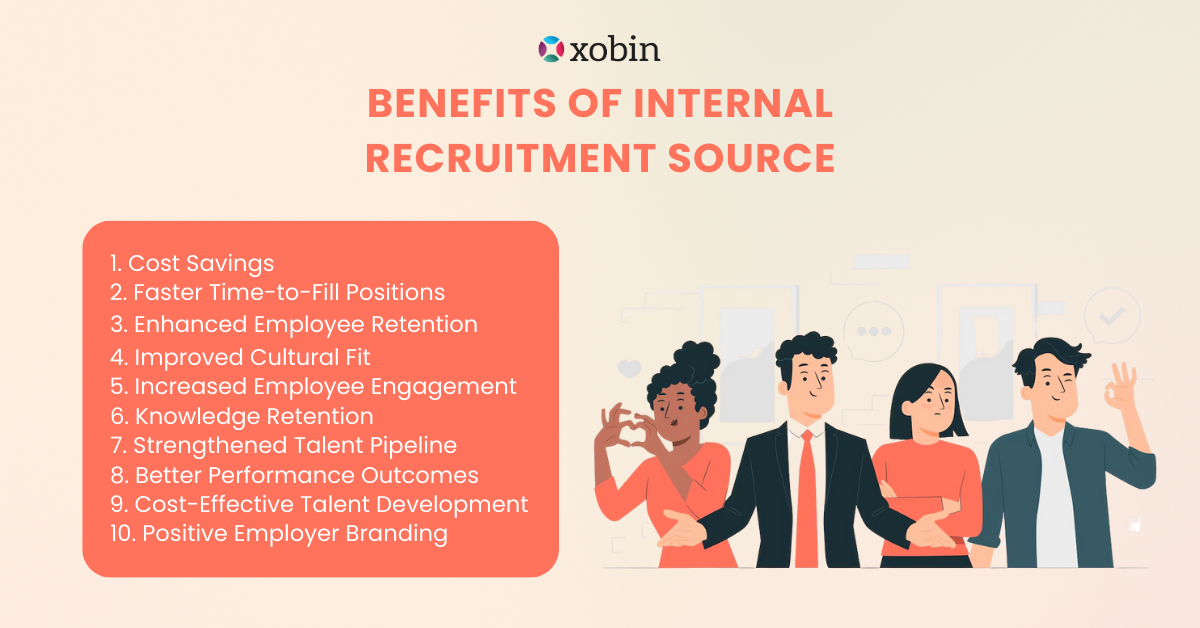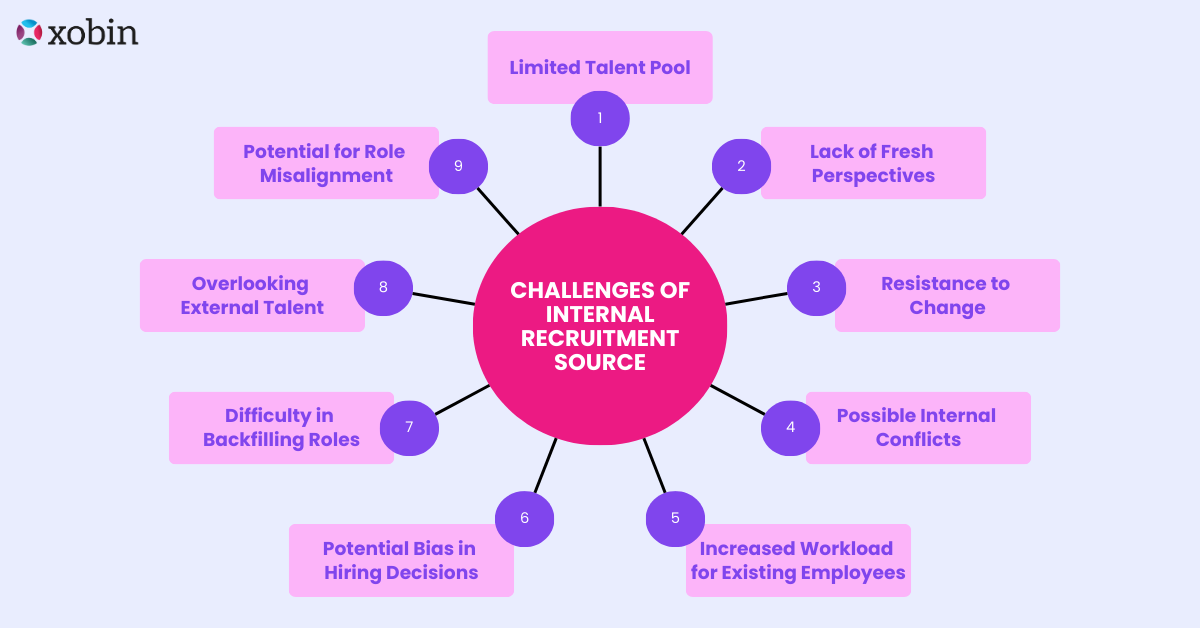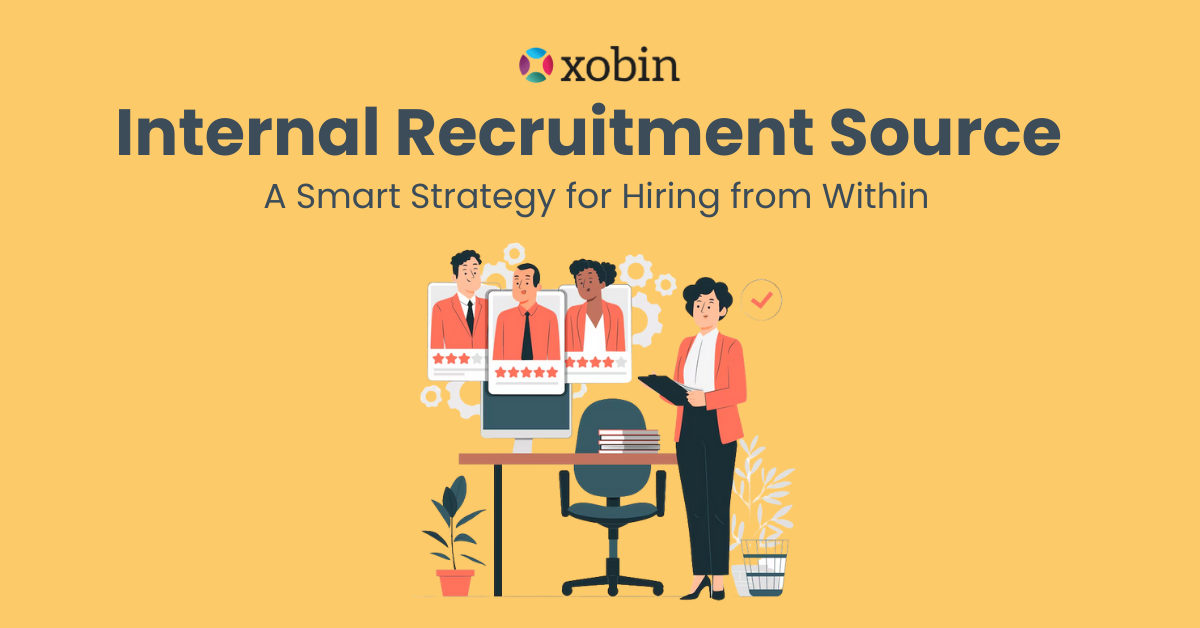Hiring the right talent is a challenge every recruiter faces. But what if the best candidate for your open role is already part of your organization? Pre-Employment Testing allows companies to leverage their existing workforce, filling positions faster while saving time and resources. Instead of searching externally, you can promote, transfer, or reassign employees who already understand the company’s culture and goals. This approach not only boosts employee morale but also reduces hiring costs.
Table of Contents
However, internal recruitment comes with its challenges, such as limited talent pools, internal competition, and role-backfilling issues. So, how can recruiters make the most of internal recruitment while overcoming these hurdles? This blog explores everything you need to know, from different types of Internal Recruitment Source to its benefits and challenges. By the end, you’ll have a clear roadmap to optimize your hiring strategy and strengthen your workforce from within. Let’s dive in!
What is an Internal Recruitment?
Internal recruitment refers to hiring employees from within the organization instead of seeking external candidates. This method allows businesses to fill vacancies by promoting, transferring, or rehiring existing employees. Since these individuals are already familiar with the company’s culture, processes, and expectations, they require minimal training and can adapt quickly to new roles.
Moreover, internal hiring fosters employee growth, boosting motivation and retention. By providing career advancement opportunities, companies create a positive work environment that encourages loyalty and productivity. Additionally, leveraging internal recruitment saves both time and resources, as it eliminates the need for lengthy hiring cycles and expensive job postings.
However, to maximize its benefits, companies must implement a structured process that ensures fairness and transparency. Using robust talent assessment tool, recruiters can easily identify the right internal candidates, streamline the selection process, and make data-driven hiring decisions.
Types of Internal Recruitment Source

Organizations use various internal sources of recruitment to fill job openings efficiently. Each method offers unique advantages and helps businesses retain skilled employees while reducing hiring costs. Below are the most common internal recruitment sources, along with real-world examples.
1. Promotions
A promotion is a type of internal recruitment source that occurs when an employee is elevated to a higher position with increased responsibilities and better compensation. Organizations use promotions to reward high-performing employees and ensure leadership continuity.
For instance, a Marketing Coordinator with excellent performance and strategic thinking skills may be promoted to a Marketing Manager. Since the employee already understands the company’s brand and goals, they require minimal training. Promotions boost employee morale, increase retention, and foster a culture of internal growth. However, companies must ensure a fair and transparent promotion process to maintain workplace harmony.
2. Transfers
A transfer involves moving an employee from one department, branch, or job role to another without changing their rank or salary. Companies use this internal recruitment source to address workforce imbalances, enhance skill development, and provide employees with new challenges.
For example, a Customer Service Representative may be transferred to the Sales Team if they demonstrate strong persuasion and communication skills. This transition allows the employee to gain valuable experience while the company benefits from internal talent redeployment. By utilizing transfers effectively, organizations can optimize workforce allocation and boost overall productivity.
3. Employee Referrals
Employee referrals are a powerful way to identify potential candidates through recommendations from existing employees. Organizations encourage referrals because current employees are more likely to suggest individuals who align with the company’s values and culture.
For instance, a Software Engineer may refer a former colleague for an open position within the development team. Since this internal recruitment source is familiar with the candidate’s skills and work ethic, the hiring process becomes more efficient. Additionally, referred employees often integrate seamlessly into the company, reducing turnover rates. To maximize the benefits, companies can implement structured referral programs with incentives.
4. Internal Job Postings
Internal job postings involve advertising open positions exclusively within the organization. Companies can post job openings on internal communication channels, such as:
- Intranet portals
- Company newsletters
- Employee bulletin boards
This internal recruitment source gives employees the opportunity to apply for roles that match their skills and career aspirations before external candidates are considered.
For example, a company looking for a Project Manager might post the vacancy on an internal portal. Interested employees can apply, ensuring career growth opportunities for existing staff. This method not only retains skilled employees but also creates a transparent recruitment process. In order to improve effectiveness, companies should ensure clear job descriptions and eligibility criteria.
5. Succession Planning
Succession planning is a long-term strategy that involves identifying and developing employees for leadership positions. Companies prepare high-potential employees for future roles by providing training, mentorship, and leadership development programs.
For instance, a Finance Director may be mentored and trained to take over the Chief Financial Officer (CFO) role in the future. This proactive approach ensures business continuity and minimizes disruptions when leadership changes occur. Succession planning helps organizations retain top talent and build a strong leadership pipeline.
6. Boomerang Employees (Rehiring Former Employees)
Boomerang employees are individuals who leave a company but later return after gaining additional experience or skills. Organizations often prefer rehiring former employees because they require less onboarding and already understand company policies.
For example, a Senior Developer who left a tech company for a competitor may return after a year with enhanced technical skills. Since they are familiar with the work culture, they can reintegrate quickly. This internal recruitment source saves recruitment costs and brings back talent with improved expertise. However, companies should evaluate the reasons for their previous departure to ensure long-term retention.
7. Job Rotation
Job rotation involves shifting employees across different roles within an organization to enhance their skills and provide career growth opportunities. This internal recruitment method helps employees develop a broader understanding of the company’s operations.
For example, a Human Resources Associate may rotate through roles in recruitment, employee engagement, and payroll management over a year. This experience allows them to gain a diverse skill set and prepares them for leadership roles. Job rotation also improves employee engagement and reduces monotony in repetitive tasks.
8. Temporary Assignments and Internships
Organizations sometimes fill short-term vacancies by offering temporary assignments or selecting from their pool of interns. These roles provide employees with opportunities to gain experience and prove their capabilities.
For instance, a junior accountant may be given a temporary finance manager role when the current manager is on leave. If the employee performs well, they may be considered for permanent promotion. Similarly, hiring from internship programs allows businesses to evaluate candidates before offering full-time roles. This internal recruitment source reduces hiring risks and ensures a seamless transition.
9. Internal Talent Pools
A talent pool is a database of skilled employees who can be considered for future job openings. Companies use internal talent pools to identify potential candidates for key roles without starting from scratch.
For example, a manufacturing company may maintain a list of high-performing production supervisors who could be promoted to plant managers in the future. This proactive strategy helps businesses fill positions quickly while ensuring employees are ready for career advancement. Regular online assessments and training programs can keep the talent pool updated.
10. Retired Employees as Consultants
Organizations sometimes rehire retired employees as consultants or part-time advisors. These employees bring valuable expertise and mentorship to the organization while allowing businesses to address skill issues.
For instance, a retired Chief Technology Officer (CTO) may be rehired as a technology consultant to oversee key projects. Their industry knowledge and experience provide guidance to existing teams. This internal recruitment source helps companies retain institutional knowledge while avoiding full-time salary costs. However, it’s essential to define their responsibilities clearly to ensure a smooth collaboration.
Benefits of Internal Recruitment Source

Leveraging Internal Recruitment Source offers numerous advantages that can significantly impact an organization’s efficiency, employee satisfaction, and financial health. Below are key benefits supported by real data and insights.
1. Cost Savings
Internal recruitment substantially reduces hiring expenses. By promoting or transferring existing employees, companies can avoid costs associated with external advertising, recruitment agencies, and extensive onboarding processes. Research indicates that external hiring can cost approximately 1.7 times more than internal hiring due to expenses related to job postings, recruitment fees, and training new hires.
2. Faster Time-to-Fill Positions
Filling vacancies internally accelerates the recruitment process. Internal candidates are already familiar with company policies and culture, reducing the time needed for orientation and training. During the COVID-19 pandemic, companies reported that internal recruitment led to expedited time-to-hire rates often by 10 to 12 days compared to external recruitment.
3. Enhanced Employee Retention
Offering internal advancement opportunities boosts employee satisfaction and loyalty. When employees see clear career progression paths, they are more likely to remain with the organization. According to research, 75% of internal recruits are successful in their new roles, and 47% stay in their positions for at least three years.
4. Improved Cultural Fit
Internal candidates are already aligned with the company’s culture and values. This familiarity reduces the risk of cultural mismatches that can occur with external hires. Statistics show that 73% of employees leave their jobs because they don’t fit the company’s culture, highlighting the importance of internal recruitment.
5. Increased Employee Engagement
Promoting from within signals to employees that their hard work is recognized and rewarded. This recognition fosters a sense of belonging and motivation, leading to higher productivity levels. Internal recruitment helps organizations fill roles more quickly and often in a more cost-effective way while providing opportunities that keep employees engaged and satisfied.
6. Knowledge Retention
Retaining employees through internal recruitment ensures that valuable institutional knowledge and experience remain within the company. This continuity supports consistent performance and reduces the learning curve associated with new hires. Internal hiring lessens the learning curve as existing employees are already acquainted with company processes.
7. Strengthened Talent Pipeline
A robust internal recruitment strategy helps build a strong talent pipeline. By identifying and developing current employees for future roles, companies can proactively address succession planning and reduce dependency on external talent pools. Internal hiring serves as an indicator of the strength of an organization’s internal talent pipeline.
8. Better Performance Outcomes
Employees promoted internally often exhibit superior performance compared to external hires. Their existing understanding of company dynamics enables them to adapt quickly and effectively to new responsibilities. Research has shown that internal recruits have a higher success rate in their new roles.
9. Cost-Effective Talent Development
Investing in current employee’s development is often more economical than recruiting externally. Providing training and growth opportunities enhances skills within the organization, leading to improved performance and innovation. Internal recruitment saves time and money as it eliminates the need for external recruitment expenses.
10. Positive Employer Branding
A strong internal recruitment strategy enhances the company’s reputation as an employer that values and nurtures its workforce. This positive image attracts both current employees and potential external candidates, contributing to a robust talent pool. Organizations that prioritize internal hiring demonstrate a commitment to employee growth and development
Challenges of Internal Recruitment Source and How to Overcome Them

While Internal Recruitment Source offers several advantages, it also presents certain challenges that organizations must navigate. Understanding these obstacles and implementing effective solutions can help businesses make the most of their internal hiring strategy.
1. Limited Talent Pool
One of the biggest challenges of Internal Recruitment Source is the restricted talent pool. Organizations can only choose from their current workforce, which may not always have the necessary skills or experience for the role. This limitation can result in skill gaps and hinder innovation.
How to Overcome It – To address this issue, companies should invest in continuous employee development. Training programs, mentorship initiatives, and upskilling efforts can prepare employees for future roles. According to LinkedIn’s 2023 Workplace Learning Report, 89% of learning and development professionals agree that upskilling is essential for internal mobility.
2. Lack of Fresh Perspectives
Internal recruitment often leads to a homogeneous work environment, where employees share similar thought processes and work methods. Without fresh perspectives, companies may struggle with innovation and adaptability.
How to Overcome It – To counteract this, businesses should encourage knowledge-sharing sessions, cross-functional collaboration, job rotations and external training opportunities. This can help employees develop diverse skills and viewpoints. Additionally, a hybrid hiring approach, where organizations balance internal promotions with external recruitment can introduce new ideas while retaining institutional knowledge.
3. Resistance to Change
Employees promoted through internal recruitment may struggle to adapt to their new roles. Some may face resistance from colleagues who previously viewed them as peers rather than leaders. This shift in dynamics can create workplace tension.
How to Overcome It – Effective leadership training and communication are key. Organizations should provide management training to newly promoted employees and set clear expectations. Encouraging open discussions about role transitions can also help smooth the adjustment period.
4. Possible Internal Conflicts
When employees compete for the same promotion, it can create tension within teams. This competition may lead to dissatisfaction and decreased morale among those who are not selected.
How to Overcome It – To mitigate these issues, companies should establish a transparent promotion process. Clearly defining the criteria for internal recruitment and providing constructive feedback to unsuccessful candidates can help maintain workplace harmony. Additionally, offering alternative career development opportunities to all employees ensures that everyone has a fair chance at growth.
5. Increased Workload for Existing Employees
Filling a position internally often leaves a vacancy that still needs to be addressed. Without proper planning, the transition can increase workloads for other team members, potentially leading to burnout.
How to Overcome It – Organizations should have a succession plan in place to ensure a smooth transition. Identifying and preparing employees for future roles can prevent disruptions. Additionally, temporary staff or workload redistribution can help manage gaps until a replacement is found.
6. Potential Bias in Hiring Decisions
Favoritism and unconscious bias can influence internal recruitment decisions. If promotions are based on relationships rather than merit, organizations may experience reduced fairness and employee dissatisfaction.
How to Overcome It – Implementing structured assessment methods, such as skills tests and performance reviews, can ensure fair decision-making. Using AI-powered hiring tools and blind evaluation techniques can also help minimize bias in internal recruitment.
7. Difficulty in Backfilling Roles
Promoting an internal candidate often creates another vacancy that must be filled. If there isn’t a strong succession plan, this can lead to a cycle of continuous hiring challenges.
How to Overcome It – Companies should implement workforce planning strategies. Identifying potential successors for key roles in advance helps streamline the transition. Cross-training employees in multiple functions can also prepare them for future opportunities.
8. Overlooking External Talent
Relying too heavily on internal sources of recruitment can cause organizations to miss out on highly skilled external candidates. These individuals might bring new expertise and competitive advantages to the organization.
How to Overcome It – A balanced approach is necessary. Companies should evaluate whether an internal candidate truly meets the job requirements or if an external hire would be more beneficial. Combining internal recruitment with external recruitment strategies ensures that the best talent is selected.
9. Potential for Role Misalignment
Promoting from within does not always guarantee success. Sometimes, an employee may not be the right fit for a new role despite their experience and knowledge of the company. A poor fit can lead to reduced performance and job dissatisfaction.
How to Overcome It – Companies should conduct comprehensive assessments before making internal recruitment decisions. Skills testing, competency evaluations, and trial periods can help ensure that candidates are well-suited for their new positions.
Take Your Internal Hiring to the Next Level with Xobin!
Implementing an effective internal recruitment strategy requires the right tools to assess, track, and develop employees. Xobin’s comprehensive talent assessment software streamlines the process, ensuring fair and data-driven hiring decisions.
- Evaluate employee competencies with customizable 3400+ skill tests and 2500+ job role-based tests.
- Ensure unbiased and fair assessments with advanced AI proctoring features.
- Identify leadership potential, cognitive abilities, and cultural fit using Psychometric & Behavioral Tests
- Save time with an ATS (tracks) that simplifies internal job postings, applications, and evaluations.
- Use advanced 360-degree actionable reports to design training programs and upskill your workforce.
With a vast skill inventory, Xobin ensures a seamless assessment experience. Whether you’re hiring top talent or upskilling your workforce, Xobin provides the tools to make data-driven decisions with confidence.
Ready to optimize your internal recruitment process? Book a personalized demo today and explore how Xobin transforms the way you recruit from within!






